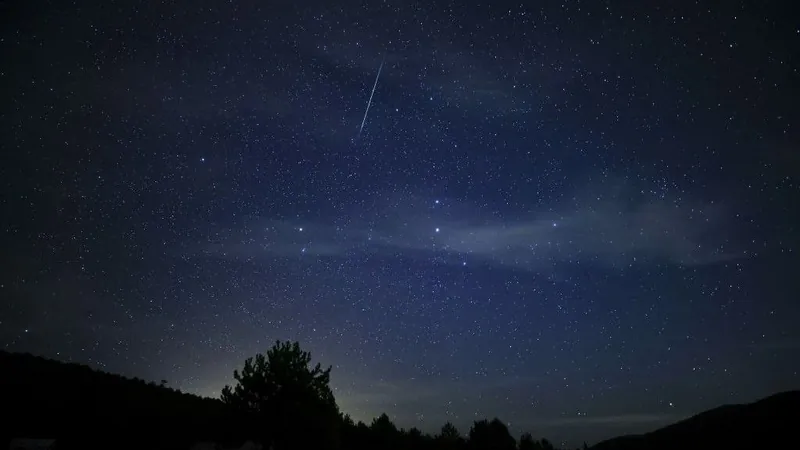
The Quadrantid Meteor Shower Peaks Tonight—Witness the First 'Shooting Stars' of 2025!
2025-01-02
Author: Liam
As we step into the new year, stargazers are in for a celestial treat! The Quadrantid meteor shower, one of the most intense displays of shooting stars, reaches its peak tonight. With its brief but spectacular burst, many consider it especially elusive due to its short duration—lasting only a few hours. However, for 2025, conditions appear to be favorably aligned for viewers in North America, particularly those residing west of the Mississippi River.
A Historical Perspective on the Quadrantids
It’s intriguing to note that the meteors radiate from the northeastern part of the constellation Boötes, which is why they could have been named the "Boötid" meteors. However, the moniker "Quadrantids" has stuck since its inception. This name pays homage to an ancient constellation known as Quadrans Muralis, created in the late 18th century by astronomer J.J. Lalande to celebrate the astronomical instrument used for celestial observations. The actual discovery of the meteor shower dates back to the 1830s by Adolphe Quetelet, who noted its significant activity.
Understanding the Origins: Cometary Connections
What makes the Quadrantids particularly fascinating is their origins. These meteors are remnants of a long-dead comet. In 2003, astronomer Peter Jenniskens identified an asteroid, 2003 EH1, with the potential to produce the Quadrantid meteor shower. This celestial body might actually be fragments from an extinct comet that was observed by early astronomers in East Asia around the years 1490-91. It’s hypothesized that the comet disintegrated, leaving behind the meteoroids that now grace our night sky.
Optimal Viewing Times and Conditions
For the best viewing experience in 2025, North Americans should be ready around 10 a.m. Eastern Time (7 a.m. Pacific Time or 1500 GMT) when maximum activity is expected. As dawn breaks, the radiant point of the shower will rise in the dark northeastern sky, providing an excellent chance to catch sight of the meteors. Residents in the eastern U.S. may experience meteor rates between 20 to 40 per hour, while those in the west could witness rates soaring up to 120 per hour, under optimal conditions.
Even more exciting is the factor of moonlight—this year, moonlight will not hinder visibility, making it one of the best meteor displays to enjoy throughout the year.
Get Prepared Before You Go Stargazing!
However, prepare yourself for the cold! January isn’t exactly known for its warm weather, and watching meteors can be a chilly affair. To enjoy the spectacle fully, bundle up in warm clothing, sip on hot cocoa or coffee, and consider bringing along friends to enhance your experience. Observing together will allow you to cover more of the sky and share the joy of catching those spectacular shooting stars.
So, as the skies darken tonight, grab your warmest clothes, gather some friends, and get ready to be awed by the first meteor shower of 2025. This could be a once-in-a-year opportunity to witness nature's beautiful fireworks display—don't miss it!



 Brasil (PT)
Brasil (PT)
 Canada (EN)
Canada (EN)
 Chile (ES)
Chile (ES)
 Česko (CS)
Česko (CS)
 대한민국 (KO)
대한민국 (KO)
 España (ES)
España (ES)
 France (FR)
France (FR)
 Hong Kong (EN)
Hong Kong (EN)
 Italia (IT)
Italia (IT)
 日本 (JA)
日本 (JA)
 Magyarország (HU)
Magyarország (HU)
 Norge (NO)
Norge (NO)
 Polska (PL)
Polska (PL)
 Schweiz (DE)
Schweiz (DE)
 Singapore (EN)
Singapore (EN)
 Sverige (SV)
Sverige (SV)
 Suomi (FI)
Suomi (FI)
 Türkiye (TR)
Türkiye (TR)
 الإمارات العربية المتحدة (AR)
الإمارات العربية المتحدة (AR)